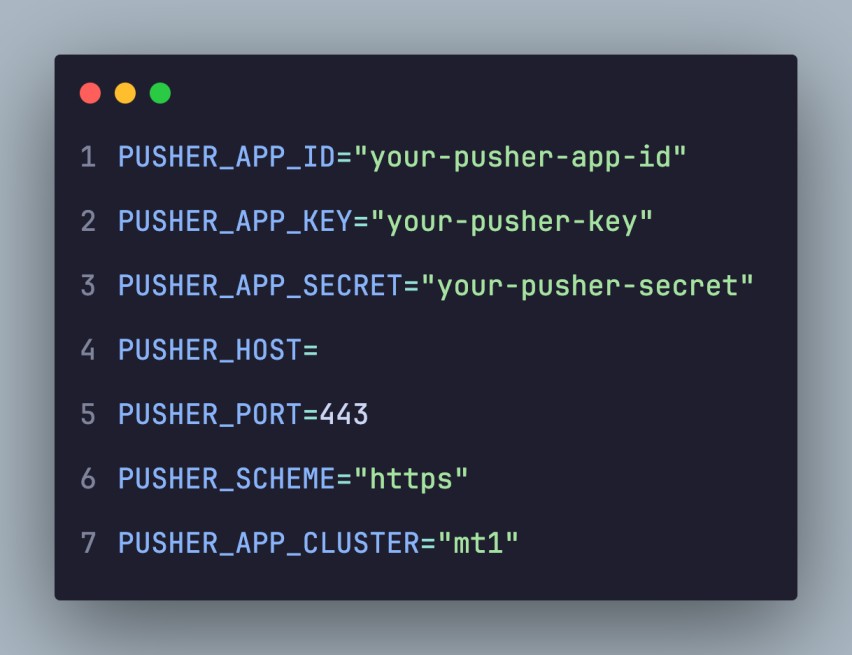Hi followers, today you are going to know about Laravel’s other feature, “Broadcasting.” Suppose your web application, without being delayed, updates new information without you while you have to refresh the page. It’s an example of the power of real-time features , and by Broadcasting system, Laravel makes it easy to accomplish them. This will accompany you through the basis of Laravel Broadcasting by explaining how it works and why it’s a game-changer for modern web development.
Understanding the Basics
Laravel Broadcasting lets the server-side application communicate with the frontend in real-time using technologies such as Laravel WebSockets. Just think of it as a live radio station where the server broadcasts programmes, and specific clients tuned to the right “channels” can listen in.
Events: What Gets Broadcasted
In Laravel, an event conveys something crucial happening in the application. For instance, at the time when a new user registers or an order is placed, these can be presented as events. While making an event broadcastable, you simply command Laravel that it should be sent out in real-time. You have to specifically mark which “channel” this event should be sent to, like a specific radio frequency.
Channels: Where Events Are Sent
Channels works as virtual pathways for your real-time events. They help to organize who is going to receive and which kind of updates. Laravel offers three main types of channels :
- Public Channels: Anyone who is visiting your site can listen to these. Think of general announcements everyone should see .
- Private Channels: These require users to be logged in and authorized to listen. This is used for private or user-specific information, as direct messages .
- Presence Channels: These are like private channels but also let you know who else is currently listening on the same channel. Great for chat rooms or collaborative tools where knowing who’s online is important .
For private and presence channels, Laravel has a built-in security system to ensure only authorized users can subscribe and receive the broadcasts. You can define these authorization rules in your application’s code .
Drivers: How Broadcasting Works Behind the Scenes
Laravel uses various kinds of “drivers” to handle the actual sending of these real-time messages. These drivers are able to use technologies like WebSockets to make a constant link between your server and the user’s browser. Laravel supports several popular drivers :
- Laravel Reverb: This is a self-hosted WebSocket server built by the Laravel team specifically for Laravel applications. It’s fast, measurable, and perfectly accomplished with Laravel .
- Pusher Channels: This is a very well-known cloud-based service that takes care of all the complexities of real-time communication. It’s very dependable and easy to use .
- Ably: Another powerful cloud-based platform for real-time experiences is this, which offers a global reach and features like per-user permissions.
You can choose the driver that best fits your application’s needs and is budget-friendly.
Laravel Echo: Making Frontend Easy
On the frontend (what users see in their browser), Laravel provides a JavaScript library called Echo. Echo makes the process simple and easygoing to connect your chosen broadcasting driver and listen for events on specific channels. It operates the technical details of WebSockets, so you can focus on how you want to display the real-time updates to your users.
Why Use Laravel Broadcasting?
Laravel Broadcasting offers several compelling advantages to your web applications:
- Engage Your Users: Real-time updates make your application more correlative and keep users engaged.
- No More Refreshing: Users see new information instantly without needing to manually refresh the page.
- Faster and Smoother: Real-time updates make your application feel more responsive and dynamic by itself.
- Power Collaboration: Build features such as live chat, shared document editing, and real-time notifications for better teamwork.
- Efficient Communication: WebSockets provide a fast and very effective way to send and receive data in real-time.
- Scalability: The supported drivers are exclusively built to handle many users and connections.
- Simplified Development: Laravel’s combination makes setting up real-time features much easier than starting from scratch.
Real-World Examples
Laravel Broadcasting can be used in countless ways to enhance web applications:
- Live Chat: Building real-time messaging systems .
- Notifications: Displaying instant alerts for new activity or updates.
- Collaborative Tools: Allowing multiple users to edit documents or work on projects simultaneously.
- Live Dashboards: Showing real-time data updates, like stock prices or website analytics.
- Online Games: Synchronizing actions and game states between players.
- Real-Time Tracking: Displaying the live location of vehicles or deliveries.
- Interactive Elements: Creating live polls, reactions, and user presence indicators .
More Articel To Read:
Laravel Collections: Your Friendly Guide to Handling Data Like a Pro
How to Use Laravel Cache for Speed Up your Application
Laravel Artisan Guide – Laravel v12.x
Getting Started
To use Laravel Broadcasting, you’re going to need to install the most efficient packages and configure your chosen driver. Laravel’s documentation depicts detailed steps for each driver (Reverb, Pusher, Ably). You’ll also need to install Laravel Echo in your frontend and configure it to connect to your broadcasting service.
Once set up, you can define your events to implement the ShouldBroadcast interface, specifying which channels they should be broadcast on. Then, in your frontend code using Laravel Echo, you can subscribe to these channels and listen for the events, updating your user interface in real-time when new information arrives. Here is the example of Laravel Broadcasting in the .env file.

Conclusion
To conclude, we must say Laravel Broadcasting is a very effective tool that gives you permission to take your web applications to the next level by including engaging and interactive real-time features. Whether you’re building a small personal project or a large enterprise application, Laravel provides the tools and flexibility someone needs to create truly dynamic user experiences. Through understanding the core concepts and exploring the available drivers and Laravel Echo, you can unlock the full potential of real-time communication in your Laravel projects.
